Honda CB650R or Kawasaki Z650RS or Triumph Trident 660: Looking for your first multi-cylinder bike? We have the answer.
Story: Sarmad Kadiri
Photography: Sanjay Raikar
For a motorcyclist, buying their first big bike is an unforgettable experience. The memory remains etched forever. We bring together the best from the big league and we’ll tell you exactly which one to buy. Starring in this comparative test is the Kawasaki Z650RS, the latest neo-retro to reach our shores and powered by a practical parallel-twin; the Triumph Trident 660 that’s equipped with a versatile three-cylinder; and the Honda CB650R which boasts of a full-blown in-line four.
Design:
It’s amazing how the three have such different styling approaches. The Z650RS takes inspiration from Kawasaki’s rich heritage, especially the iconic Z1 from the 1970s, right from the teardrop-shaped fuel-tank, the lovely Candy Emerald Green colour, circular headlamp and mirrors, and the analogue twin-pod instrument cluster. Even the alloy wheels come with a spoke-type pattern and are finished in golden colour to complete the old-school charm. But why the oversized pillion grab-rails and saree-guard? If you’re not into the retro game, then Kawasaki even have the sharper and modern Z650.
The Trident 660 is the British take on the classic motorcycle design. It is extremely compact and athletic. Elements like the round headlamp, carved out fuel-tank, a centralised mass, and tapering tail section with a neatly integrated tail-lamp add to the charm. Those looking for a big bike in terms of sheer size might remain underwhelmed by the straightforward approach. Spend some time with the bike, though, and you’ll find ample bits that tug at heartstrings. It’s the simplicity and the nicely rounded-off parts that check the right boxes for most.
The Honda has the most striking road presence, attracting all the wolf whistles. This is neo-retro done right. This bike is big, with a large and shapely fuel-tank and sharp tank scoops, chunky golden front fork, and a massive four-cylinder engine. The symmetrical exhaust bend-pipes are gorgeous and could easily be part of an orchestra ensemble. It’s the size and road presence that make paying the EMI worthwhile. In terms of fit and finish, the Honda looks the most premium among the three, the Triumph is decent but shows that it’s made to a cost and the Kawasaki is nice but not exceptional.
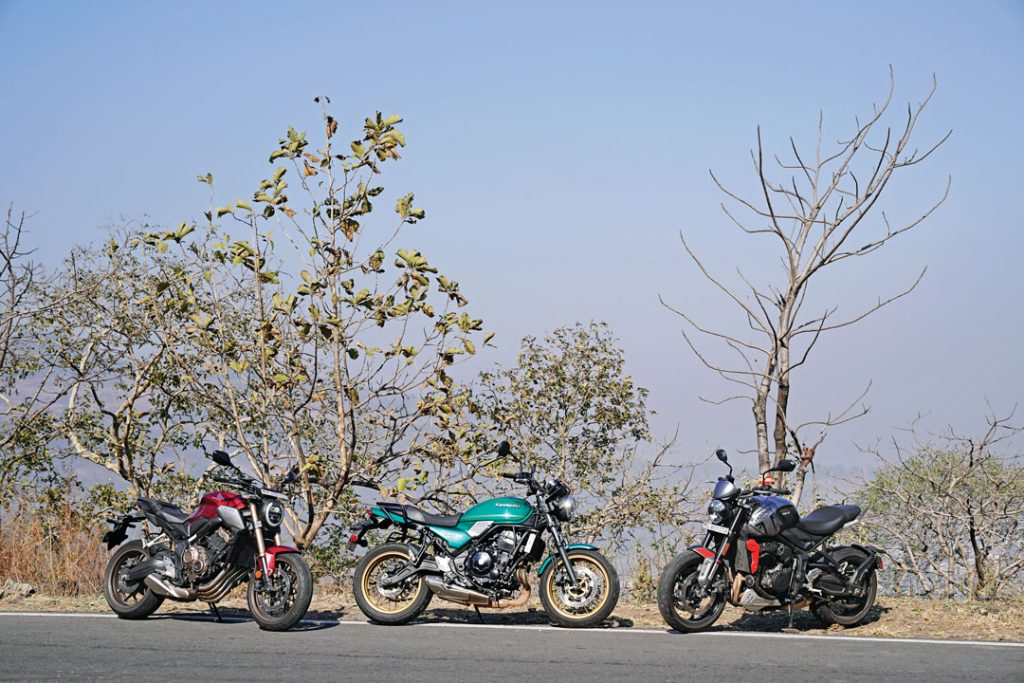
Ergonomics:
Being the largest in size means that the CB650R offers ample room for even taller riders and has a saddle height of 810 millimetres, which, in spite of being the highest, isn’t too tall either. The Trident 660 is at a more approachable 805 mm while the Z650RS is even more accommodating at 800 mm. The rider geometry of the Honda is also more aggressive, with rear-set foot-pegs and a slightly leaning forward stance. Carving corners and pacing through winding roads feel the easiest on the big 650. The Trident 660 also has a sporty seating position but it is more neutral than the Honda’s. Taller riders might find it compact, but most average Indians will have their knees perfectly within the tank recesses.
The Z650RS has the most relaxed ergonomics; that’s ideal to cruise on the roads for hours without any fatigue. On longer rides, one needs to keep in mind that the Kawasaki has the smallest and narrowest tank that holds just 12 litres of fuel compared to the Triumph’s 14 litres and the Honda’s 15.4 litres. Due to its shape, one can’t get a good grip on it during a series of bends or when one speeds up. Although some might find the RS less engaging, its easy-going nature is the most welcoming. Kawasaki’s single flat seat and well-positioned footage make it the most comfortable for the pillion rider. While the Honda rear seat is fairly wide and flat, too, the foot-pegs are higher and the Triumph’s tapering seat offers limited room, leaving little room for hitchhikers.
Features:
When you compare the features of the three bikes, it becomes obvious why the Kawasaki is the most affordable here. Unlike its competitors, it gets a twin-pod analogue speedometer and tachometer with a small multi-functional LCD screen to display information such as the fuel level, selected gear, time, and trip meter. And it gets old-school round discs instead of petal-type ones and offers ABS for safety. In comparison, the Honda comes with an LCD unit which is easy on the eye but looks a generation old on a premium middle-weight. It also gets a hazard light that flashes under hard braking and, of course, ABS. Some might take a while to get used to the swapped horn switch and indicator button positions.
Although all the three bikes here come equipped with LED lighting, the design of the CB650R is the most eye-catching. Another interesting fact is that the more premium bikes like the CB and Trident miss out on the adjustable clutch lever which the Kawasaki offers. Yet the Trident is the best equipped here. Right from a modern colour TFT display which also gets Bluetooth connectivity to a car-like turn indicator system that flashes thrice when the button is tapped gently, not to forget Rain and Road riding modes available as standard and the option of getting a quick-shifter at extra cost.

Engine: Twin vs Triple vs In-line Four
The character of a parallel twin is poles apart from a triple and both of them feel completely different from an in-line four and that’s what makes this comparo so interesting. These big engines do tend to emit some heat, but the best part of buying these well-engineered bikes is that they have a proven track record and never get unbearably hot.
Twin-cylinder Engine: Kawasaki’s liquid-cooled 649-cc parallel-twin powers a range of motorcycles from their sports tourers, cruisers, street bikes, and adventure bikes. Which says a lot about the popular engine’s diversity and reliability. The power delivery is very smooth and feels quick enough which perfectly suits the Z650RS’s retro character. Get aggressive with the throttle and the twin will bring a smile to your face. The 68 hp may be the smallest number in this battle, but it peaks early at 8,000 rpm and delivers well on your command. The motor gets to speed quickly and cruises at 120-130 km/h effortlessly. But it lacks big-bike-like intake and exhaust note and hair-raising performance. The RS is not the best here when it comes to low-speed cruising on higher gears and the shifts feel comparatively clunky at lower revs. On the Z650RS, things never get out of hand; it remains composed throughout and is the friendliest of the three.
Triple-cylinder Engine: The Trident 660’s triple-cylinder has a rich lineage with traces of the very capable Street Triple 675’s DNA. But what really took us by surprise was that the Triple felt more refined than the Honda’s in-line four. The Triumph loves to be revved hard and the 81 hp peak at a higher 10,250 rpm. What makes this such a joy to ride is that 90 per cent of the 64 Nm of torque is available from as low as 3,600 rpm. So, even from lower revs the Trident briskly surges ahead with a twist of the throttle. The only drawback is that you’re left wanting below 3,000 rpm, waiting for things to spool up. This easy-going and tractable engine can chug around town at 40 km/h in sixth gear without any knocking or protest. It’ll be an easy transition if you’re upgrading from something like a Bajaj Dominar or even a KTM. In no time does one get addicted to the punchy mid-range available beyond 4,000 rpm, which is all you need for regular riding. And when you itch to go faster, it whizzes past 6,500 rpm, turning the exhaust note into a howl, making you squeeze the fuel-tank, hold on tightly to the handlebar, and leave you grinning wide. Being designed for beginners, the electronic aids might seem intrusive at times, but that’s the job. If you’re starting off, then Rain mode has your back as it dulls the throttle input, while Road is the standard set-up. A more experienced rider might want the Sport mode with bare minimum obtrusion.
Four-cylinder Engine: The Honda isn’t just the biggest but also proudly exhibits its beautifully crafted in-line four powertrain. This liquid-cooled 648.72-cc mill also powers the fully faired CBR650R and, like most in-line four engines, the peak power of 87 hp comes at a rather high 12,000 rpm. As you’ve guessed, it loves kissing the red-line and promises to be rewarding if you’re keen to go all the way to the top. It delivers power in typical Honda fashion: linear and effortlessly. This is such a tractable engine that it allows you to remain in sixth as you potter around at 40 km/h. Neither does it punish if one enters a corner in a gear too high as it continues to deliver a strong drive through. However, as the revs go up, especially between 6,000 and 8,000 rpm, you can feel some of the buzz from the engine creeping in. Beyond that, things iron out quickly and you really enjoy revving it up to the limiter. It also has the lightest clutch and slickest gear-shifts. In capable hands, the CB650R can be all the bike one needs as it can keep up with the best in the business, be it the city or the highway. The most rewarding part is the in-line four symphony which sounds melodious at lower revs and turns into a crescendo as one whacks open the throttle.
Ride and Handling: When it comes to handling, the fight is equally matched with some trade-offs. The RS borrows its trellis from the Z650 and, not surprisingly, feels light and easy to manoeuvre. In fact, the upright handlebar and mid-set foot-pegs feel more accommodating and better for longer jaunts. Yes, it’s not the most engaging but the old-school Kawasaki is definitely the easiest going. Even with the basic front fork and rear monoshock, it takes on bad roads fairly well and you’ll have little to complain about while cruising at highway speeds. At such speeds, the Dunlop tyres offer decent grip, but since the rear wheel isn’t the widest here, it can’t carve corners as well as the other two here.
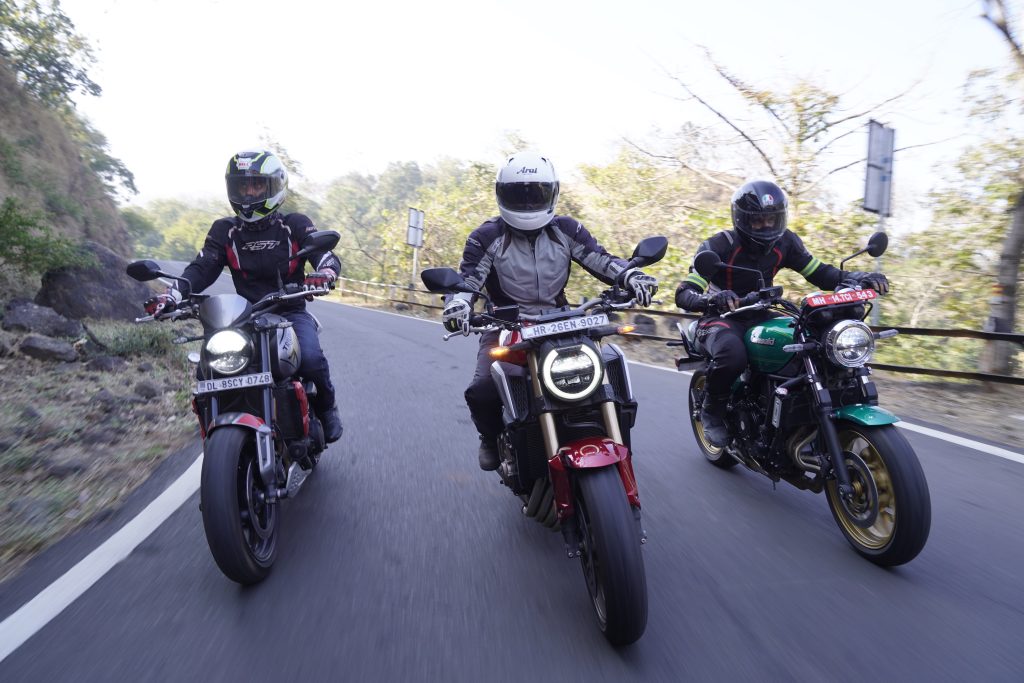
If you’re looking for something slightly sharper, then the Trident 660 should be your weapon of choice. With its weight of just 189 kilograms, it’s the lightest of the three and its compact dimensions mean that it can weave through traffic like most 250-cc motorcycles. The upside-down Showa suspension isn’t bare basic but doesn’t get damping adjustment either, but it has been tuned to take on most irregularities the roads have to offer. It’s sharp enough, nimble enough, and quite a lot of fun. The Michelin Road 5 tyres offer the best grip among these, adding to the rider’s confidence and encouraging him/her to go faster and lean harder.
The Honda’s premium Showa Big Piston fork keeps it the most composed over road undulations and keeps it extremely flat as one paces through a series of bends. The set-up feels the most mature of the three, giving a major edge to the CB650R. The more aggressive riding position and confident ride and handling mean that you can actually scrape the feelers off the pegs. But on loose and less than ideal surfaces the Dunlop Sportmax tends to let you down in terms of grip and confidence. This Honda also scores high in the braking department in terms of initial feel and feedback. While the Triumph also offers excellent bite and stopping power, the Kawasaki doesn’t lack behind but could do with a little more feel.
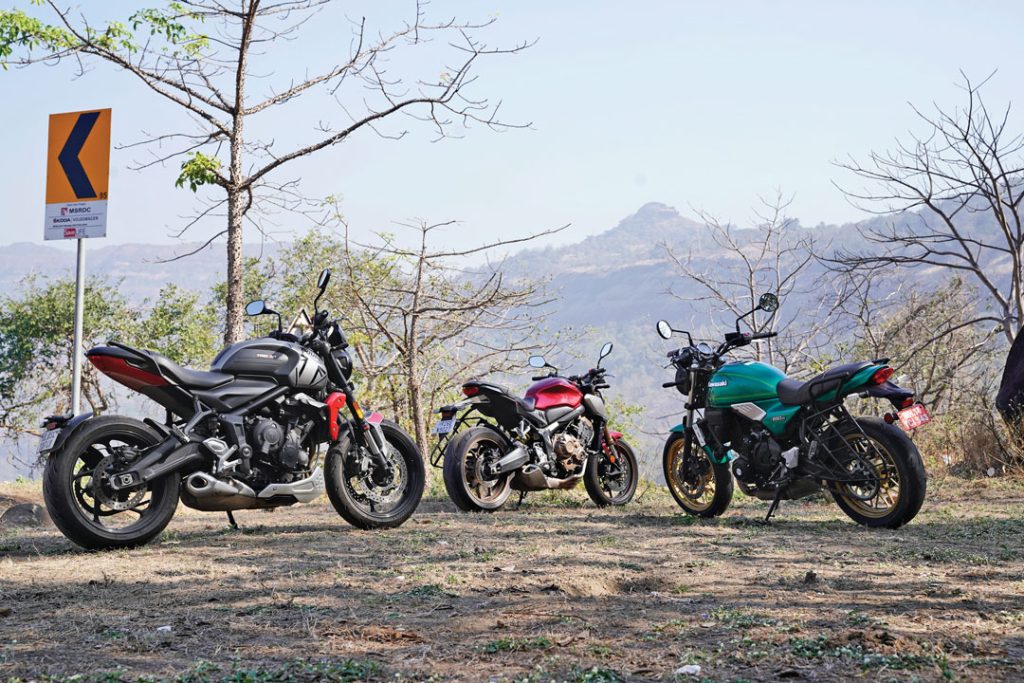
Conclusion:
Priced at Rs 6.72 lakh, the Kawasaki Z650RS is a clean and reliable, no-nonsense machine laced with nostalgia from the golden era of motorcycling. This, like the Z650, is the most practical multi-cylinder bike that you must consider if you’re out in the market. The Honda CB650R is a premium offering and, even with a hefty price tag of Rs 8.67 lakh, the most affordable in-line four available in our market (at least until Benelli revive the TNT 600i). If you’re looking for a no-compromise big bike, then this makes the cut. Meanwhile, the Triumph Trident 660 offers the best of both worlds — it’s fun to ride without being intimidating, carries a premium Triumph badge, and is priced in the middle at Rs 7.45 lakh (all prices ex-showroom). It’s not the perfect but definitely the more balanced offering among the three.

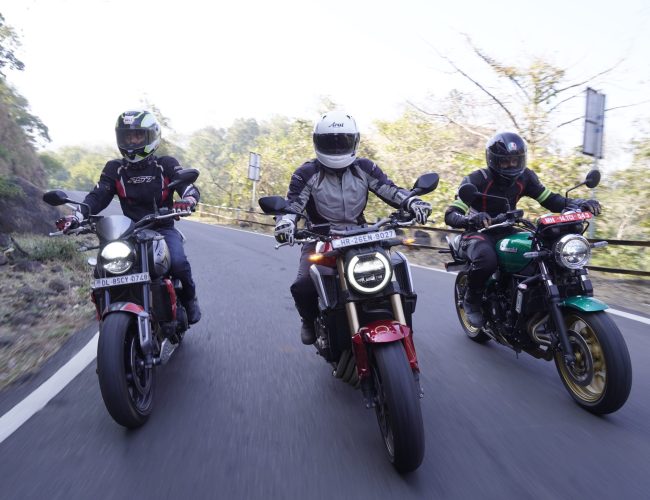
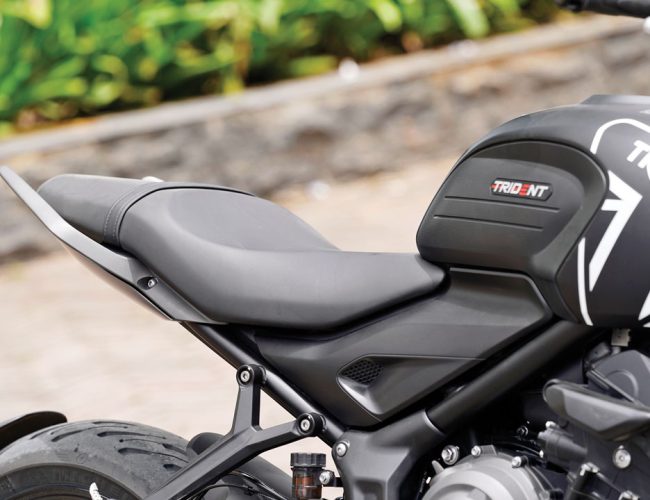
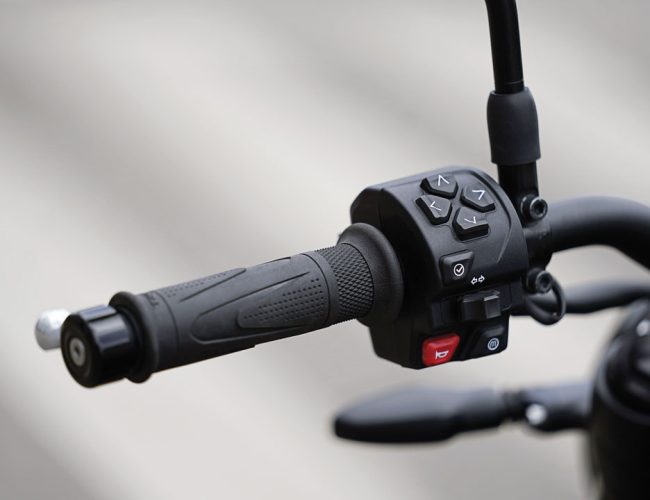

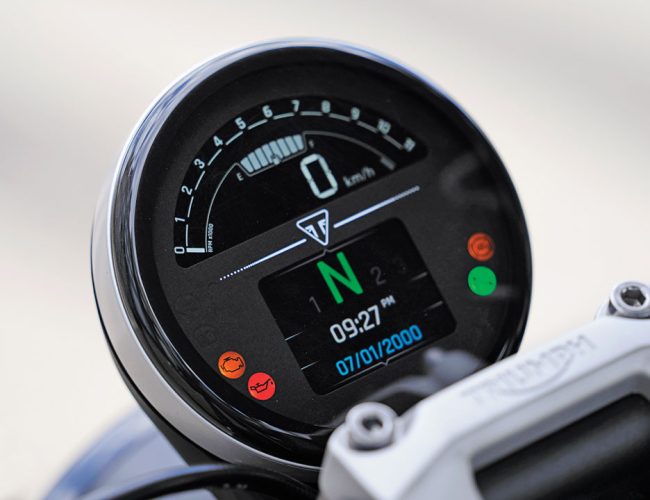
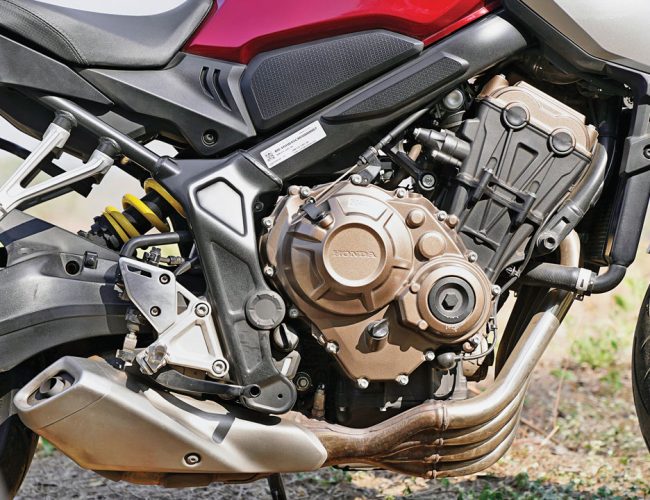
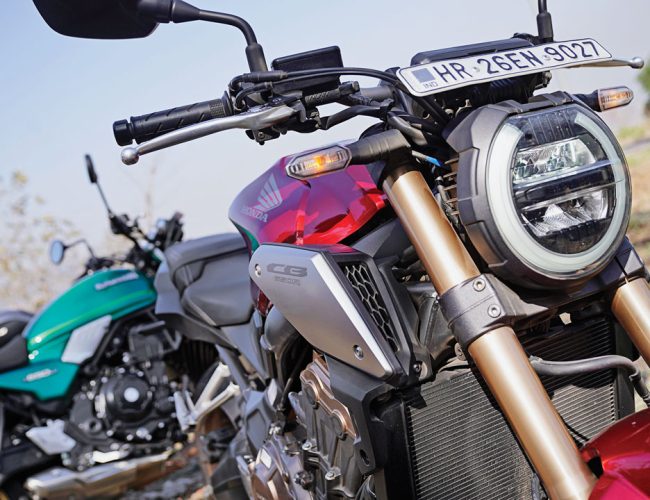
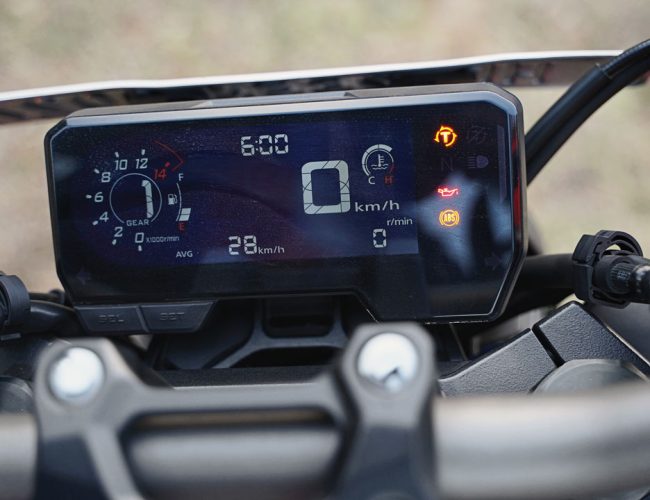

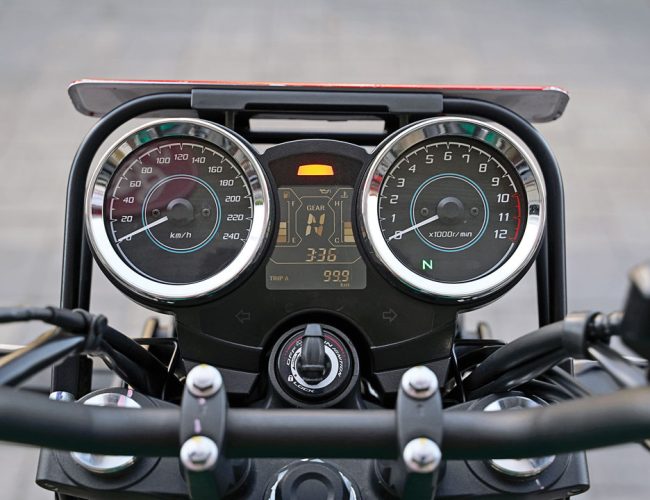

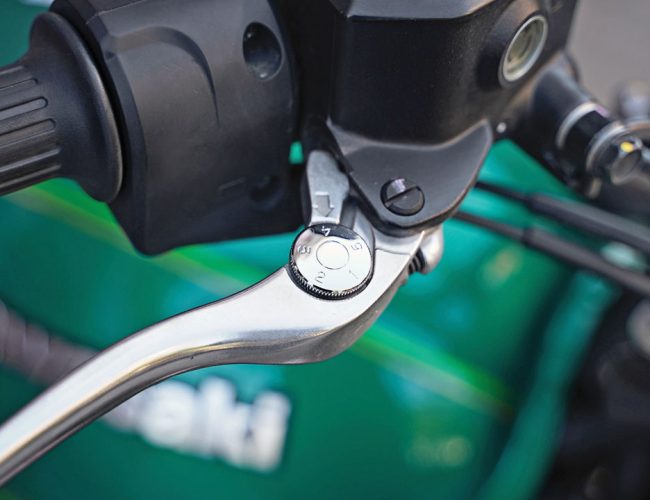
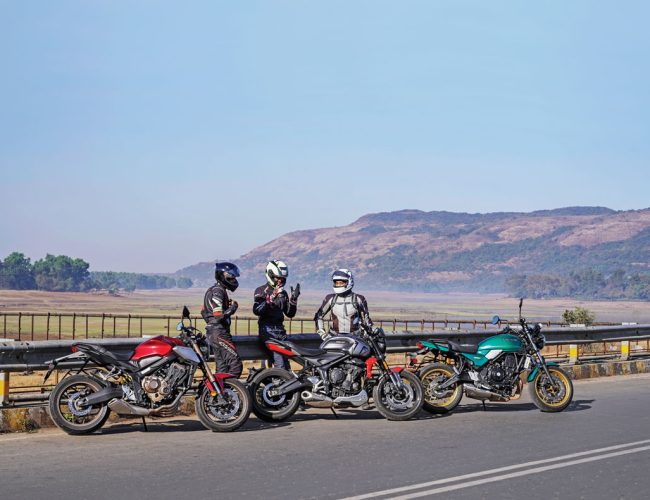
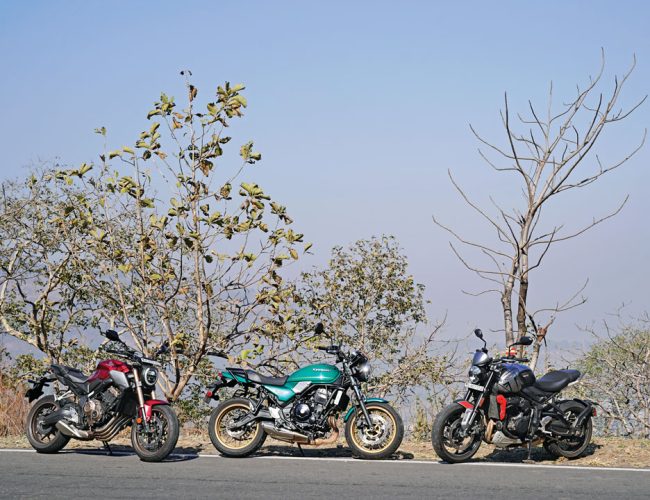
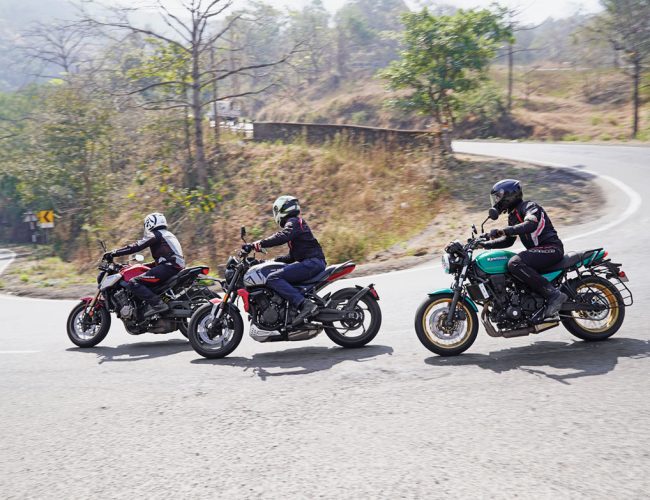
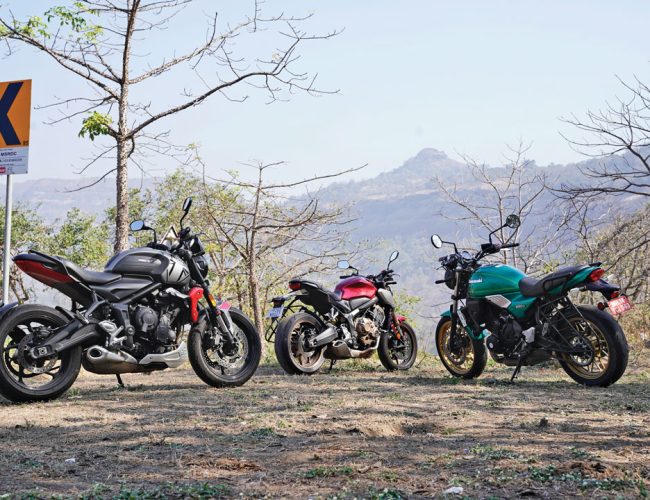

Leave a Reply